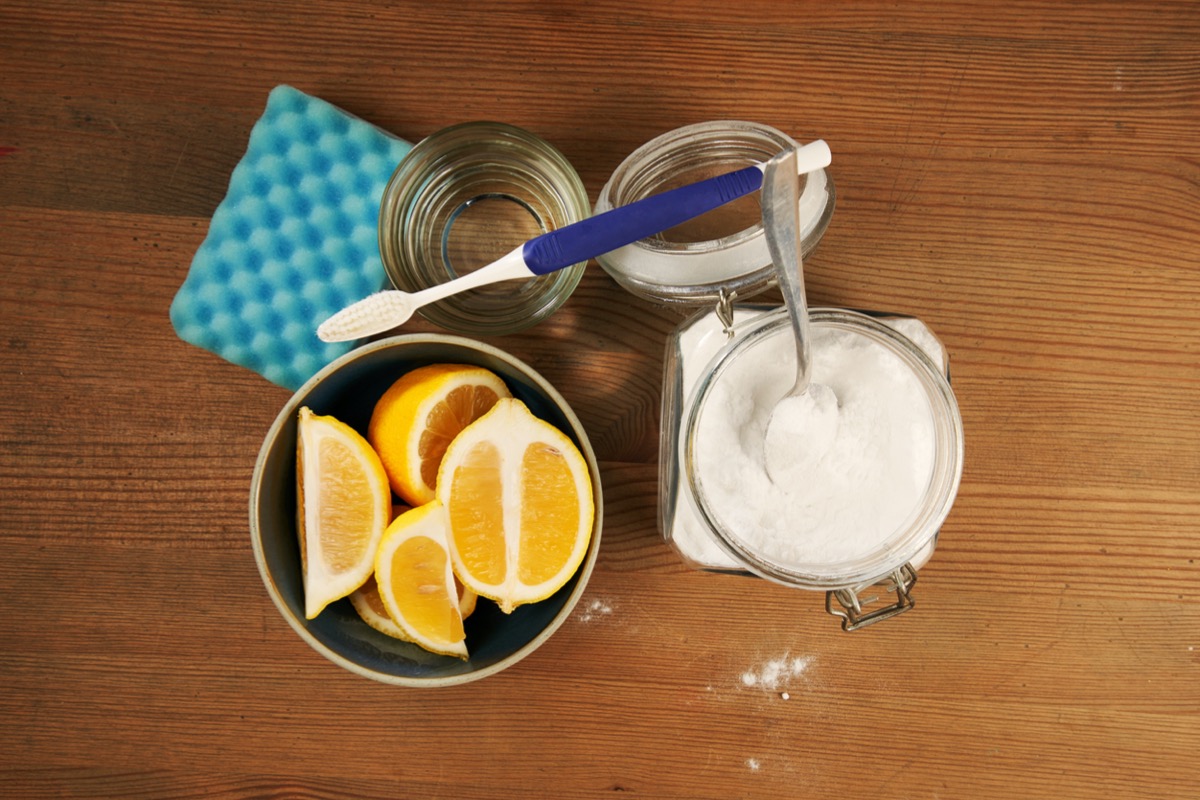

We may earn revenue from the products available on this page and participate in affiliate programs. Learn More ›
A Cleaner, More Natural Home
More and more of us are turning away from traditional cleaning products and toward eco-friendly, nontoxic alternatives, which often cost a pretty penny. The good news is that you can cut down on both harmful chemicals and costs by making your own cleaners from products that are probably already in your pantry.
Many kitchen basics also serve as grease cutters, abrasives, surfactants, disinfectants, or deodorizers. For instance, acidic items like lemon juice, vinegar, and ketchup can cut grease, whether it’s on your windows or in your oven. Abrasives like baking soda, salt, and even coffee grounds can scour away crud at the bottom of pots or inside the bathtub. Coconut oil is just one example of a surfactant, which is a substance that reduces the surface tension between liquids or liquids and solids. In other words, it attaches to dirt molecules and makes them slippery so they slide off of surfaces. Baking soda is a natural deodorizer, and medicine-cabinet regulars like hydrogen peroxide, rubbing alcohol, and tea tree oil are common ingredients in homemade disinfectants. To learn more about keeping your home fresh and clean without harmful chemicals, check out this collection of our 13 favorite pantry powerhouses.
1. Salt
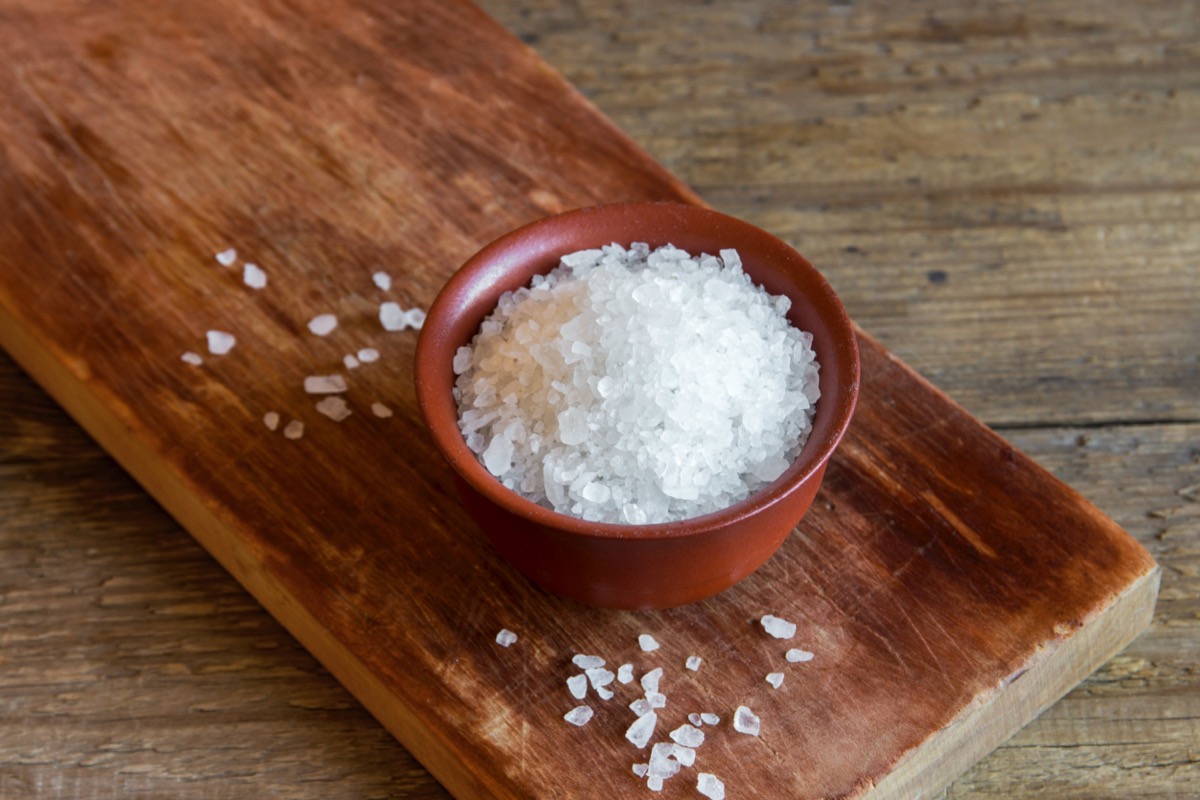
Salt is abrasive and absorbent, and it has disinfecting properties to boot! Put its strengths to good use by sprinkling salt on fresh grease stains in the oven. When the oven cools, wipe clean with a soft cloth. It’s also great for removing stuck-on food from finicky cast-iron pans: Just add a cup or so of kosher salt and a little warm water to the pan, and scrub lightly. Dry immediately and thoroughly.
2. Lemons
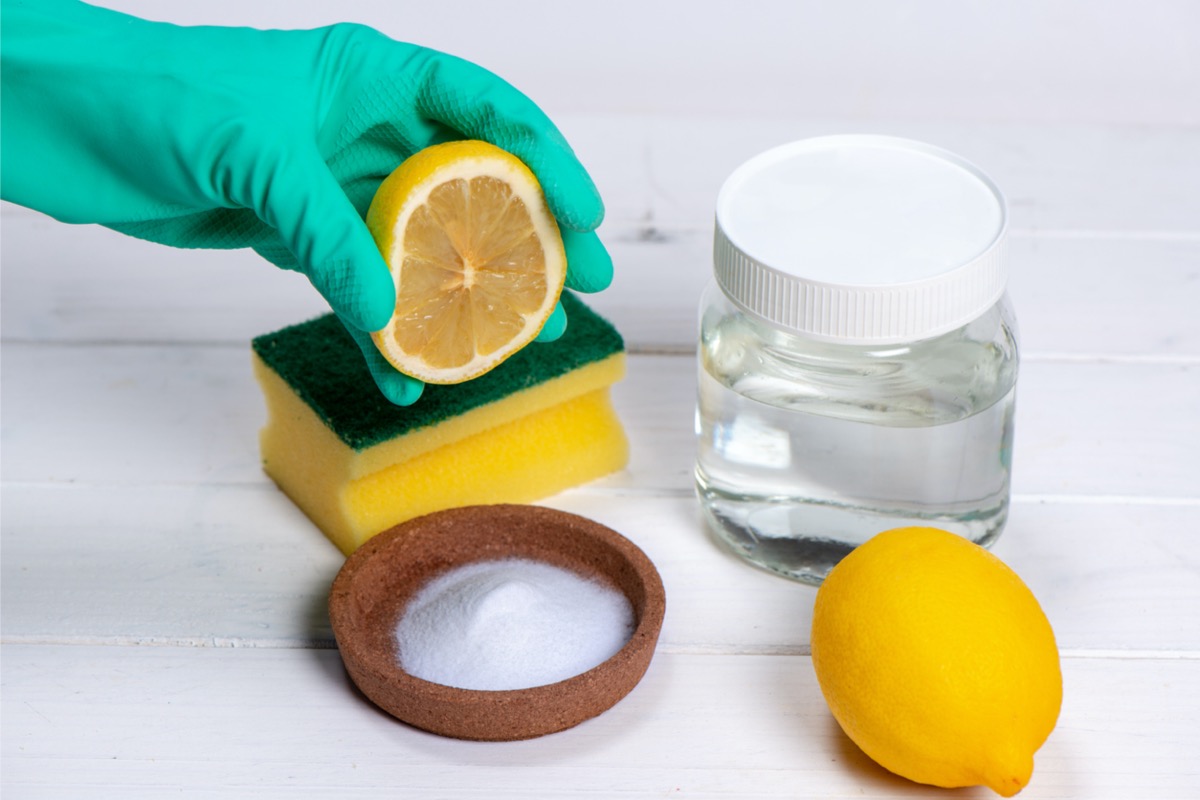
The fresh scent and acidic properties of lemons can work wonders around the house. Clean wooden cutting boards by rubbing them with half a freshly cut lemon; add some coarse salt for a more abrasive, deeper clean. The lemon-and-salt trick also works well for getting rid of soap scum on shower doors: Sprinkle coarse salt on half a lemon, rub it on the shower door, let it sit for 5 or 10 minutes, scrub, and then rinse. When you’re done, toss the lemon rind in the garbage disposal to keep it smelling fresh.
3. Cream of Tartar
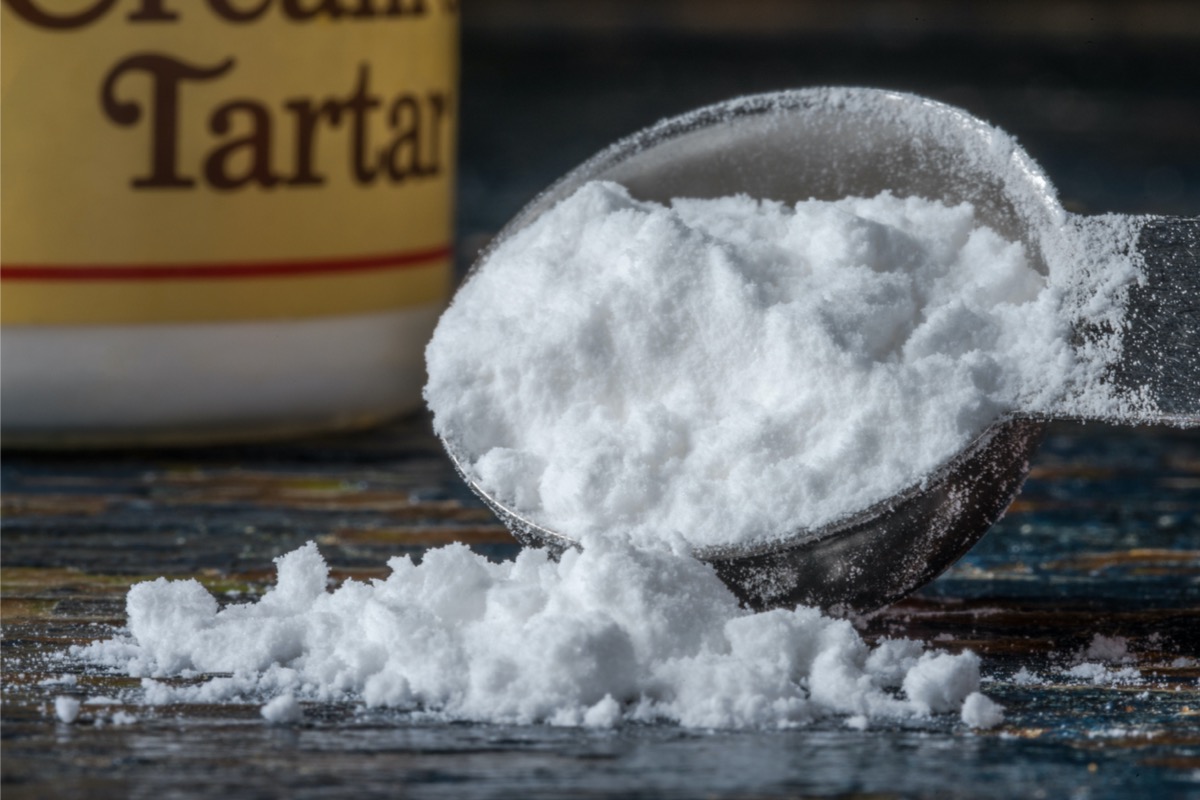
Cream of tartar, another helpful acid, shines at removing stains from tablecloths or clothing: Combine 2 tablespoons cream of tartar with 2 drops of peppermint, eucalyptus, or lemon essential oil. Add just enough water to make a paste. Spread the paste over the stain and allow it to dry before washing. Cream of tartar is also handy for getting coffee stains out of mugs, carafes, and other containers. Put a tablespoon or so of cream of tartar in a mug, add a little water to make a paste, let it sit, then rinse.
4. Ketchup
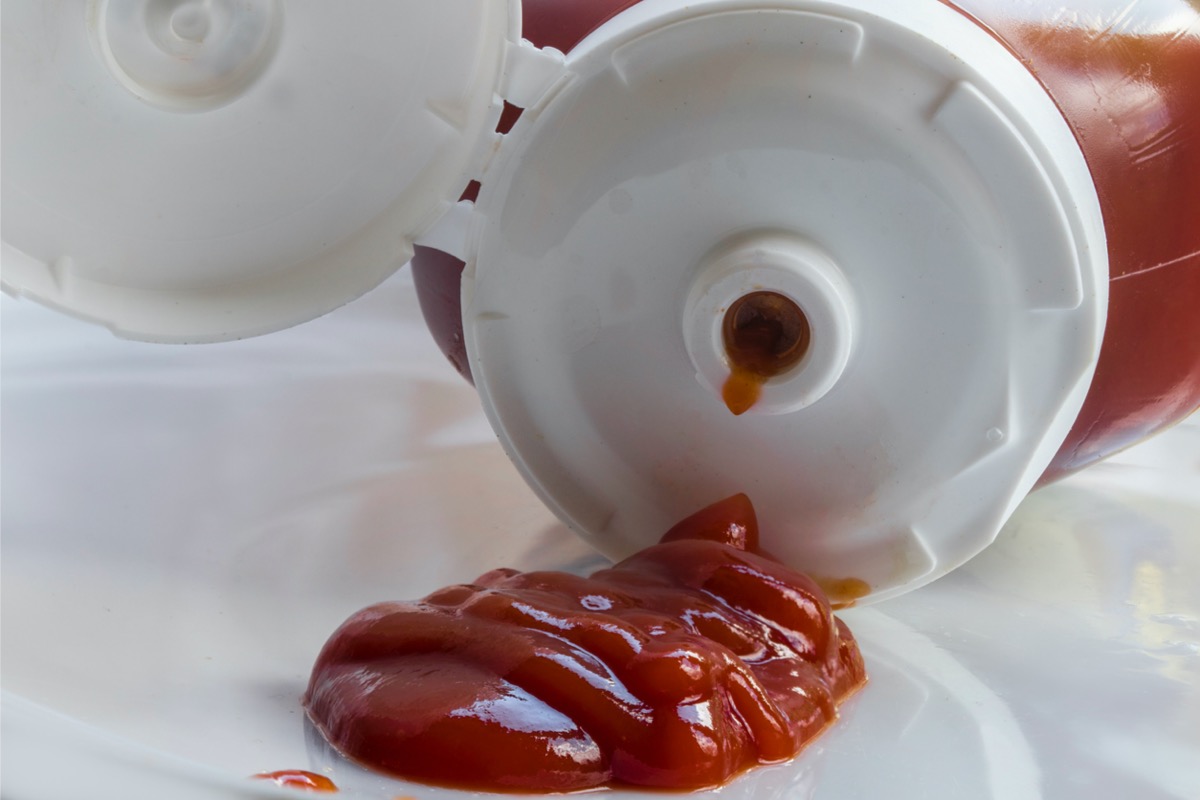
Given that tomatoes and vinegar are key ingredients in ketchup, it’s not surprising that this tangy condiment is mildly acidic—a characteristic that makes ketchup good at removing tarnish from copper and brass. Simply mix a half cup of ketchup with 2 tablespoons cream of tartar. Spread on the copper and let stand for about 15 minutes (if heavily tarnished, up to an hour). Rinse first in soapy water and then in clean water. Dry thoroughly. Ketchup is also effective at getting rid of tarnish on cast iron.
5. Aluminum Foil
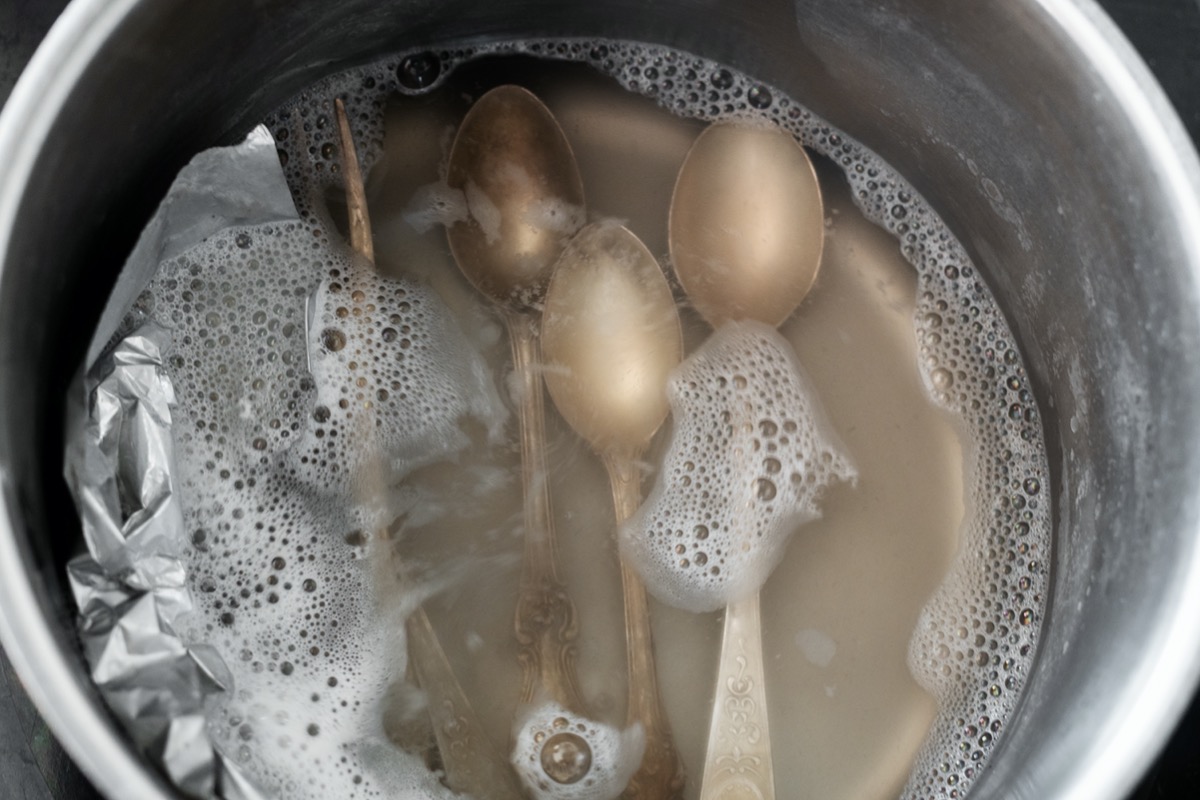
Aluminum foil has plenty of uses beyond wrapping up last night’s leftovers. For starters, it helps easily remove tarnish from silver. Place silver items in a sink or pan filled with water. Add 2 tablespoons cream of tartar or baking soda along with a few strips of aluminum foil. Let the silver soak for an hour or until it’s tarnish-free. Rinse well, and dry thoroughly with a soft cloth.
6. Vanilla Extract
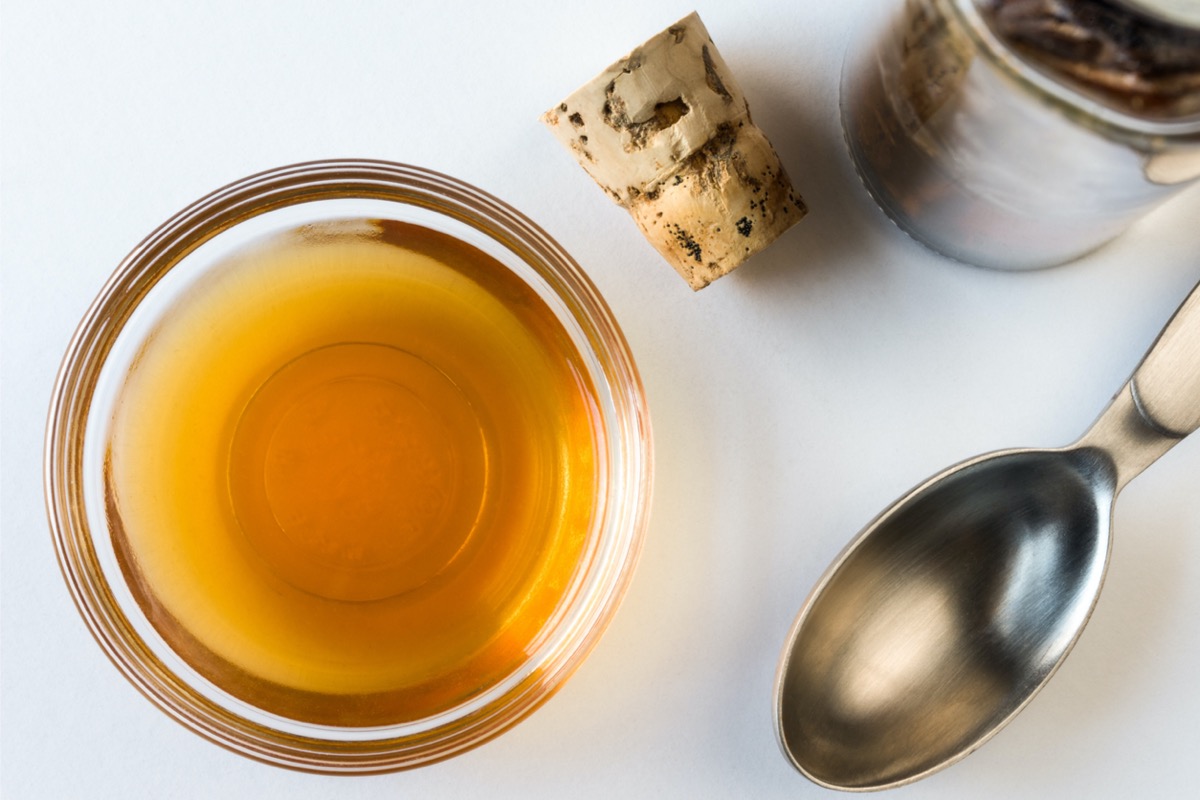
Put vanilla’s pleasant, clean smell to work around the kitchen. For a fresh-smelling refrigerator, pour 2 ounces of vanilla extract (imitation is fine) into a saucer or a small, shallow bowl. Place the vanilla on a lower shelf and leave it for a few days. Similarly, you can deodorize your microwave by putting 4 teaspoons of vanilla and 2 cups of water in a microwave-safe bowl and heating it in the appliance. Once the water boils, turn off the microwave, let the bowl sit for 30 minutes, and then remove it. Finish by wiping down the inside of the microwave.
7. Olive Oil
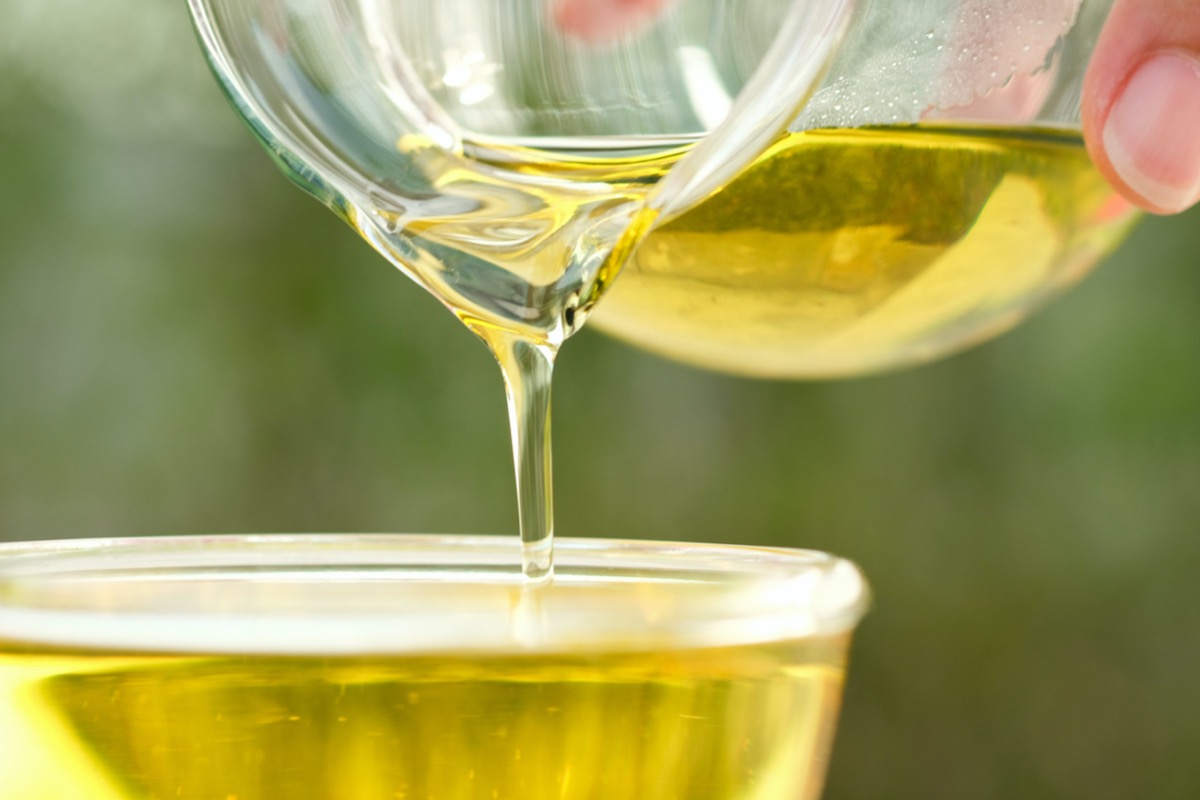
That same olive oil that livens up your dressings and marinades can also energize surfaces around the house. To keep terra-cotta pots looking clean and new, coat them inside and out with a light layer of olive oil. To make leather shine, rub on some olive oil, let it sit, and then wipe off the excess.
8. Sliced Bread
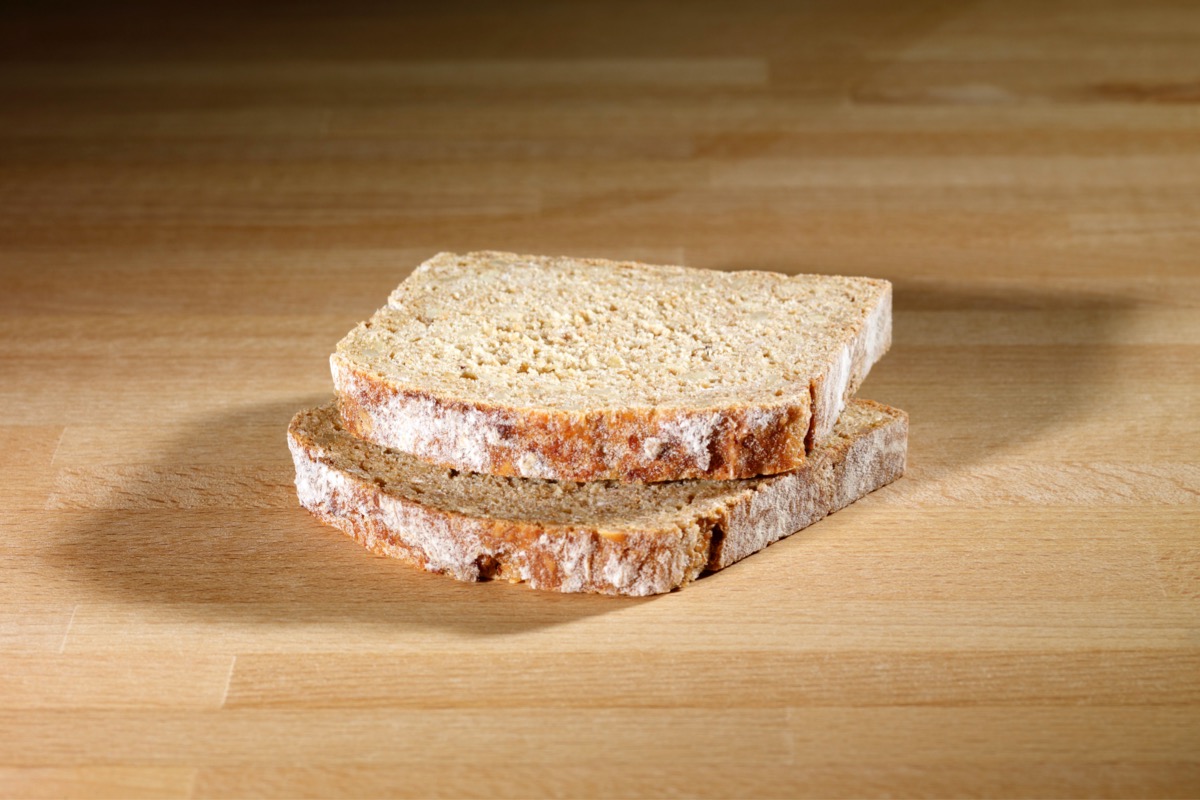
The next time you have to deal with a broken glass, sweep up the larger pieces and then grab a slice of bread. Use the bread to sponge up the remaining shards and the dust-like specks that the broom missed, then carefully throw the bread away. As well, stale bread can be used to remove smudges and fingerprints from painted and papered walls. Remove the crust, roll the bread into a tight ball, and then dab it at the offending smudge.
9. Mayonnaise
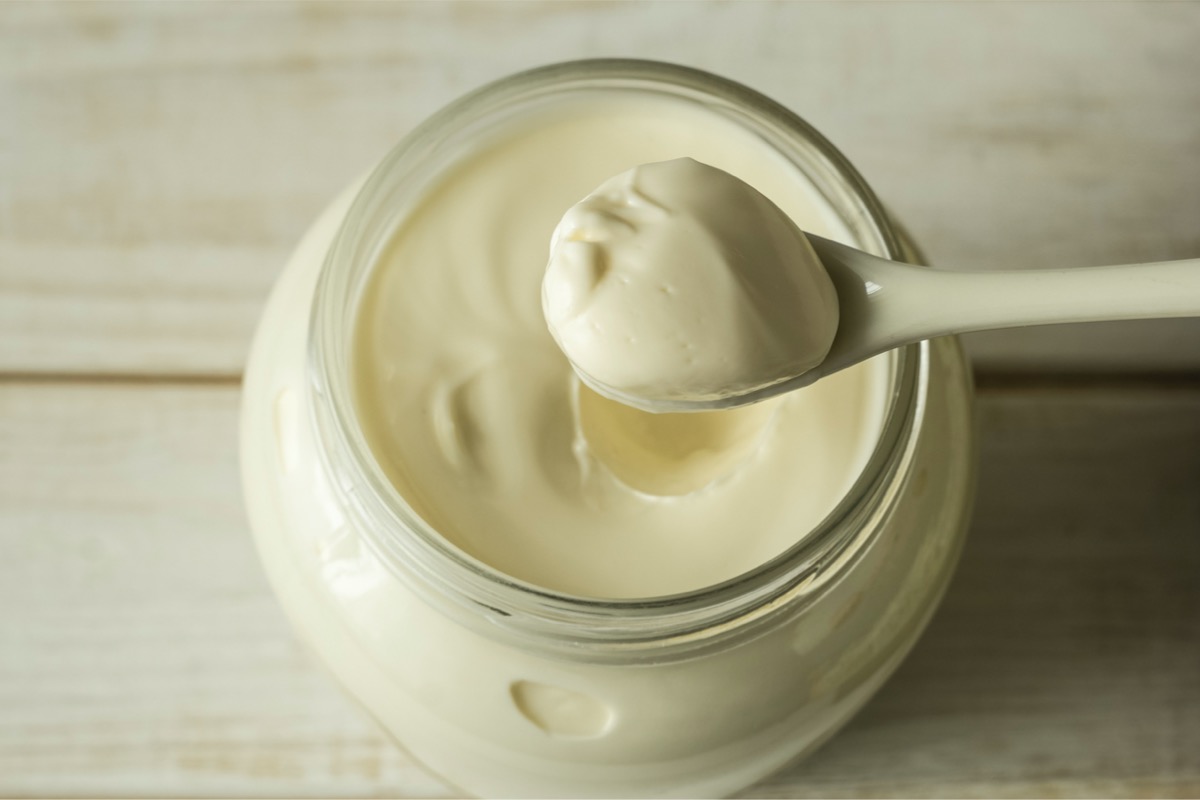
Everybody’s favorite condiment really shines—literally—at cleaning. Remove water rings from finished wood by applying mayo to the stain and letting it sit for a few hours. Wipe it away with a clean cloth, then buff dry. And if your houseplants are dull and dusty, apply a little mayo to the leaves and polish them up to give your plants a healthy glow.
10. Rice
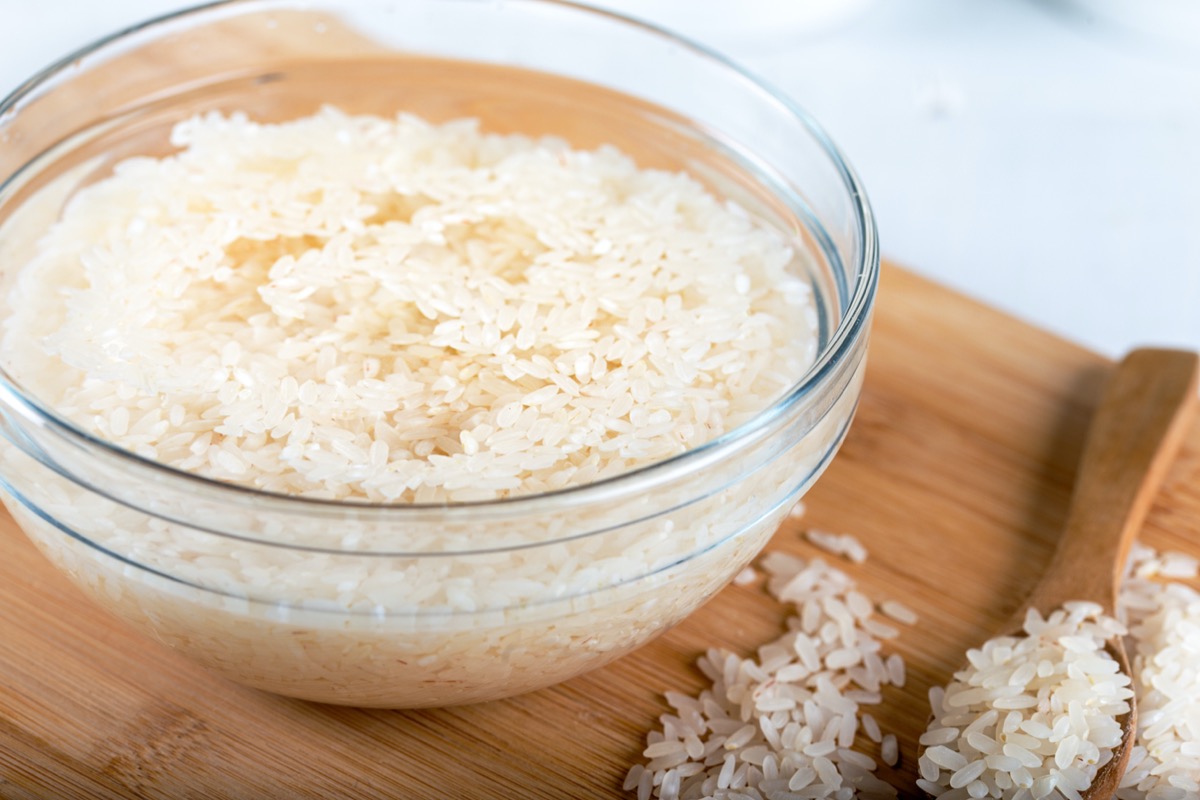
Rice is absorbent, which is why restaurants typically put a few grains in their salt shakers to prevent the salt from clumping. That absorbency also makes rice a good candidate for cleaning the coffee grinder. Pour in 1 or 2 tablespoons of rice, grind it up, and then pour it out. The rice will have captured some of the oils and residue, leaving the grinder much cleaner. Rice is also good for cleaning vases and other awkwardly shaped glassware and ceramics. Pour a little uncooked rice into a dirty vase. Add water and a little dishwashing liquid, and then swirl it around. The rice will help scour the inside of the vase, getting into those hard-to-reach spots. When you’re done, dump out the rice and water, rinse out the vase, and let it dry.
11. Cornstarch
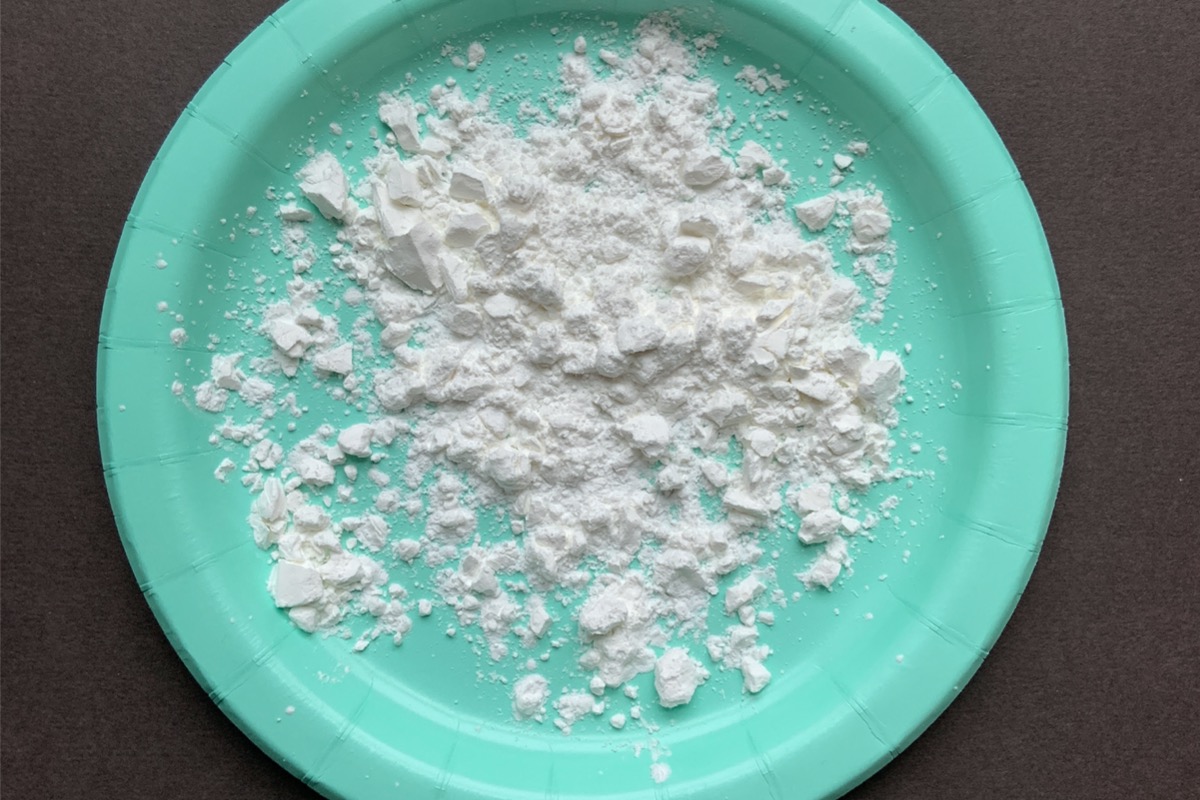
To clean windows and leave them with a streak-free shine, add cornstarch to your homemade vinegar-and-water cleaning solution (1 tablespoon cornstarch per 3 cups of liquid). What’s more, cornstarch can clean more than just windows. A solution of 1 part cornstarch and 2 parts water makes a lightly abrasive scrub for dirty pots and pans, or sinks and tubs (it’s a good idea, however, to check the manufacturer’s care instructions on these items first).
Here’s a tip for those who love plush toys: When it’s time to freshen up and deodorize your menagerie of non-washable stuffed animals, first vacuum and spot clean them, then toss them into a large bag along with 1 or 2 cups of cornstarch. Close the bag, shake it well to coat the toys, and let sit for a few hours. Remove the stuffed animals from the bag and shake them out or vacuum them before returning them to the toy box.
12. Baking Soda
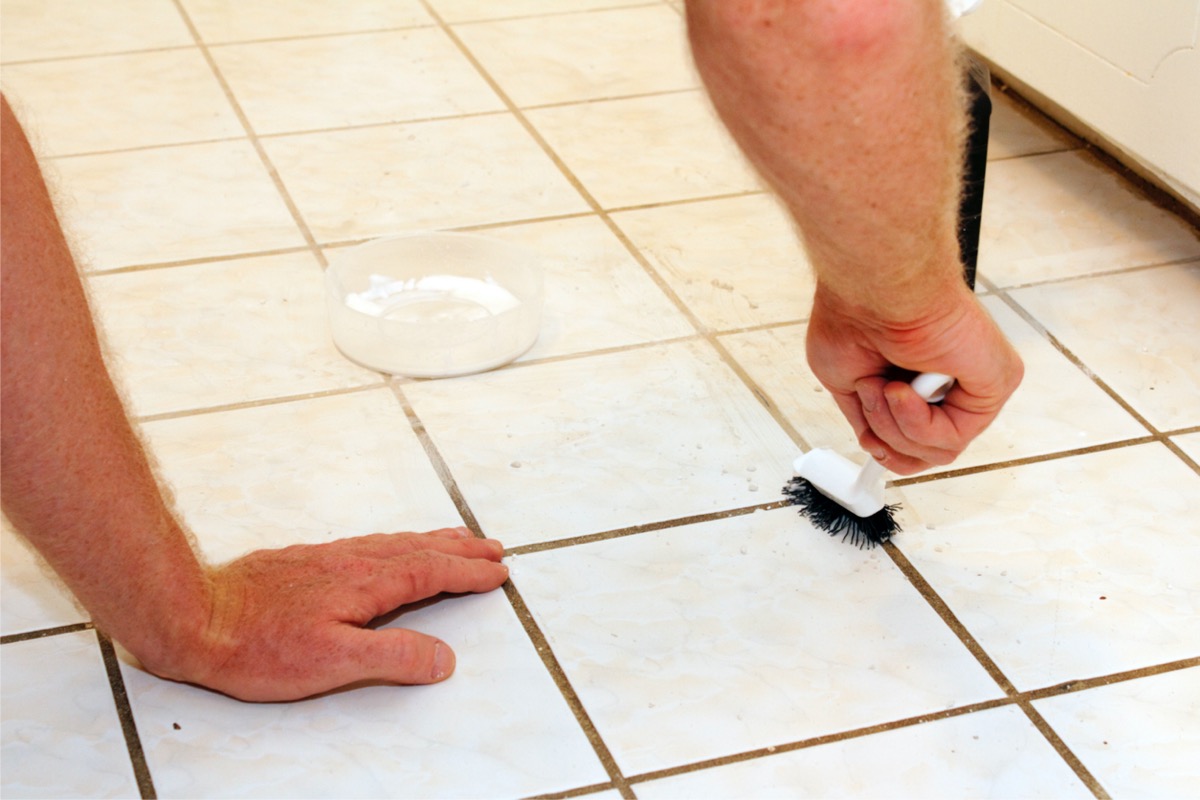
This cleaning powerhouse works its magic in every room of the house. It’s a gentle abrasive that absorbs odors and, when mixed with water, dissolves dirt. Freshen carpets by sprinkling baking soda, letting it sit for a few hours, then vacuuming it up. To clean bathroom grout, make a paste of baking soda and water, apply it to the dirty grout, and then spray it with a 50/50 solution of vinegar and warm water. Wait a few minutes, scrub with a brush, and then rinse.
13. Vinegar
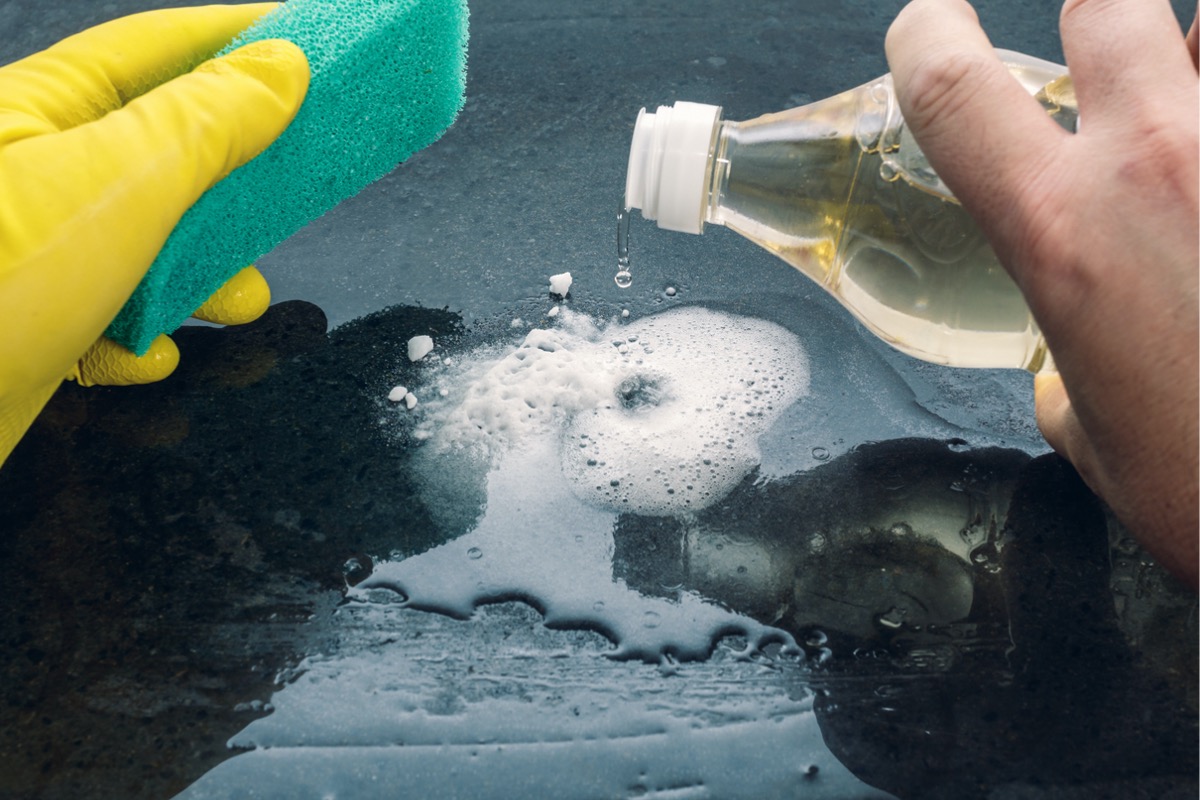
Vinegar may be the most versatile cleaner and disinfectant around. Among its other uses, it descales coffeepots, cleans grout, makes windows sparkle, and disinfects cutting boards and countertops. You can even use it to clean your oven. To manage caked-on residue, first preheat the oven to 450 degrees Fahrenheit. Then mix vinegar, water, and baking soda in a deep, wide casserole dish, and place it in the preheated oven for about 20 or 30 minutes, adding hot water when the water level gets low. Let the oven cool a bit, then wipe down the interior.
